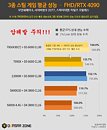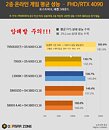- Joined
- Oct 9, 2007
- Messages
- 47,449 (7.50/day)
- Location
- Hyderabad, India
| System Name | RBMK-1000 |
|---|---|
| Processor | AMD Ryzen 7 5700G |
| Motherboard | ASUS ROG Strix B450-E Gaming |
| Cooling | DeepCool Gammax L240 V2 |
| Memory | 2x 8GB G.Skill Sniper X |
| Video Card(s) | Palit GeForce RTX 2080 SUPER GameRock |
| Storage | Western Digital Black NVMe 512GB |
| Display(s) | BenQ 1440p 60 Hz 27-inch |
| Case | Corsair Carbide 100R |
| Audio Device(s) | ASUS SupremeFX S1220A |
| Power Supply | Cooler Master MWE Gold 650W |
| Mouse | ASUS ROG Strix Impact |
| Keyboard | Gamdias Hermes E2 |
| Software | Windows 11 Pro |
AMD is firing full cylinders to release a new line of Ryzen 7000-series "Zen 4" Socket AM5 desktop processors featuring 3D Vertical Cache, at the earliest. Faced with a significant drop in demand due to the slump in the PC industry, and renewed competition from Intel in the form of its 13th Gen Core "Raptor Lake" processors, the company is looking to launch the Ryzen 7000X3D desktop processors within January 2023, with product unveiling expected at AMD's 2023 International CES event. The 3D Vertical Cache technology had a profound impact on the gaming performance of the older "Zen 3" architecture, bringing it up to levels competitive with those of the 12th Gen Core "Alder Lake" processors, and while gaming performance of the Ryzen 7000 "Zen 4" processors launched till take match or beat "Alder Lake," they fall behind those of the 13th Gen "Raptor Lake," which is exactly what AMD hopes to remedy with the Ryzen 7000X3D series.
In a report, Korean tech publication Quasar Zone states that AMD is planning to release 16-core/32-thread, 12-core/24-thread, and 8-core/16-thread SKUs in the Ryzen 7000X3D series. These would use one or two "Zen 4" chiplets with stacked 3D Vertical Cache memory. A large amount of cache memory operating at the same speed as the on-die L3 cache, is made contiguous with it and stacked on top of the region of the CCD (chiplet) that has the L3 cache, while the region with the CPU cores has structural silicon that conveys heat to the surface. On "Zen 3," the 32 MB on-die cache is appended with 64 MB of stacked cache memory operating at the same speed, giving the processor 96 MB of L3 cache that's uniformly accessible by all CPU cores on the CCD. This large cache memory positively impacts gaming performance on the Ryzen 7 5800X3D in comparison to the 5800X; and a similar uplift is expected for the 7000X3D series over their regular 7000-series counterparts.



The naming of these 7000X3D series SKUs is uncertain. It's possible that the 16-core part is called the 7950X3D, and the 12-core part 7900X3D; but the 8-core part may either be called the 7700X3D or 7800X3D. Quasar Zone also posted some theoretical performance projections for the 7950X3D based on the kind of performance uplifts 3DV cache yielded for "Zen 3" in the 5800X3D. According to these, the theoretical 7950X3D would easily match or beat the gaming performance of the Core i9-13900K, which begins to explain why Intel is scampering to launch the faster Core i9-13900KS with a boost frequency of 6.00 GHz or higher. The report also confirms that there won't be a 6-core/12-thread 7600X3D as previously thought.
View at TechPowerUp Main Site | Source
In a report, Korean tech publication Quasar Zone states that AMD is planning to release 16-core/32-thread, 12-core/24-thread, and 8-core/16-thread SKUs in the Ryzen 7000X3D series. These would use one or two "Zen 4" chiplets with stacked 3D Vertical Cache memory. A large amount of cache memory operating at the same speed as the on-die L3 cache, is made contiguous with it and stacked on top of the region of the CCD (chiplet) that has the L3 cache, while the region with the CPU cores has structural silicon that conveys heat to the surface. On "Zen 3," the 32 MB on-die cache is appended with 64 MB of stacked cache memory operating at the same speed, giving the processor 96 MB of L3 cache that's uniformly accessible by all CPU cores on the CCD. This large cache memory positively impacts gaming performance on the Ryzen 7 5800X3D in comparison to the 5800X; and a similar uplift is expected for the 7000X3D series over their regular 7000-series counterparts.



The naming of these 7000X3D series SKUs is uncertain. It's possible that the 16-core part is called the 7950X3D, and the 12-core part 7900X3D; but the 8-core part may either be called the 7700X3D or 7800X3D. Quasar Zone also posted some theoretical performance projections for the 7950X3D based on the kind of performance uplifts 3DV cache yielded for "Zen 3" in the 5800X3D. According to these, the theoretical 7950X3D would easily match or beat the gaming performance of the Core i9-13900K, which begins to explain why Intel is scampering to launch the faster Core i9-13900KS with a boost frequency of 6.00 GHz or higher. The report also confirms that there won't be a 6-core/12-thread 7600X3D as previously thought.
View at TechPowerUp Main Site | Source




